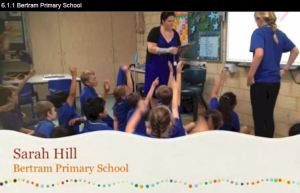In June, I enrolled in my first MOOC (Massive Open Online Course) and I am pleased to say that I completed all six weeks earning a certificate (with distinction no less!) in this self-directed learning opportunity. Here’s why? Well, basically, the stars aligned for completing this MOOC for me: as the topic mirrored my everyday professional role as an ICT specialist, MOOC’s were a recent area of discussion in my latest graduate course and probably the main reason, June means the end of term here in Canada so with some of my own children off to camp I actually had some time to spend on it. And boy was it worth it…
Here are top 5 takeaways from the course. (A link to my full course journal is at the bottom of the page.)
1. ICT provides much opportunity for student learning.
Dr. Laurillard suggests in her book Teaching as a Design Science (Laurillard 2012) that ICT provides learning types or opportunities in the following categories (acquisition, discussion, investigation, practice, collaboration & production.) This model will be helpful for me and my PLN for future lesson planning, collaborations and discussions on technology integration. In the course, there was considerable emphasis on a student’s ability to learn, play and create as a core foundation which resonated with me. Although technology skills are increasingly proving vital for student pursuing academic studies and eventually finding employment, the emphasis of the integration of technology should be primarily focused on creating the best learning opportunity for students.
2. Much can be learned from exploring globally how primary schools integrate technology.
As teachers we are always so focused on our own schools and students (pupils) that the opportunity to peek through classroom walls (and schools), hear directly from leaders and review specific case studies was a powerful learning opportunity in this MOOC. In particular, a school in Singapore had an excellent 1:1 model which comprehensively involved all members of their learning community. I also liked the emphasis on ICT in UK primary schools away from traditional ICT skills like word processing towards an updated curriculum emphasizing computational thinking and creative tinkering using technology. Robot arms, Beebots, Probots and other educational programming. Yes, please… In fact, one of the assignments was to make a technology decision for your school, my proposed suggestion was to add more computational thinking opportunities through apps like Scratch Jr., Kodable, Cargo Bot, Hopscotch, Move the Turtle and Daisy the Dinosaur and hardware like Beebots, Probots and Lego We-Do and Mindstorms.
3. I reaffirmed the importance of Computational Thinking and its place in the primary curriculum.
(OK from my blog, you probably figured that I was sold on this one but there are so many interesting resources that I plan to champion in school.)
Here are a few computational thinking resources that I explored in the course.
Developing Computational Thinking. Some interesting ideas and resources from Bosany, Slovakia. Their exploratory approach of Beebots with primary students was helpful and definitely worth adopting.
National curriculum in England: Computing at Key Stage 1 and 2 Wrote about this in my presentation on Scratch at last year’s ECCO conference but the UK is making some bold moves in updating its curriculum to promote programming which is quite commendable.

Computational thinking video by ISTE
In specific to my experience, I would love to implement Beebots, computational programming apps for primary students like Scratch Jr., Scratch among others and extend use of programmable Lego like We-Do and Mindstorms. This should make for an exciting year.
4. Collaboration and teacher support is vital for the successful integration of technology.

This theme was echoed in forums, discussions and projects throughout the course. In one part of course, an Australian ICT teacher named Sarah Hill worked side-by-side with teachers at all stages of integrated projects, starting with an initial professional training and development session, followed by collaboration and team teaching when necessary. Although not mentioned in this specific video, the need for reflection and evaluation after integrated projects is critical but often overlooked in the hustle and bustle of the busy classroom and lives of teachers. I try to emulate this practice in my collaborations with teachers emphasizing support and student needs over any of my technology preferences. Other resources explored in the course include Learning Designer, Diigo and Twitter as excellent online tools for teachers to connect and share resources for the successful integration of technology. Increasingly the creation of a online and growing PLN both inside and outside the school is a helpful strategy for teachers.
5. Children love learning with technology. (I can echo this from over 15+ years as an educator and as a parent of two primary digital tinkerers!)
I believe children see technology as “their” medium with so many opportunities for them to explore and create. Even traditional subjects are more motivating when explored through technology. Here is a research paper from UNESCO on the perspective of children.
Here is a link to a Padlet with some drawing, pictures and perspectives shared by teachers in the course.
‘Children’s Voices’ Padlet Wall: http://padlet.com/wall/wbarmwiy24
My #summerofpd continues, next up, a more “MOOCy” madness for me. I have signed up for a fun MOOC on the history of Beatles (Bring on the (pub) quizzes!?) and on a more professional note off to get my Google certification… (More tests !?)
Here is a link to my Course Journal from my Academic research tab.
~Anthony




